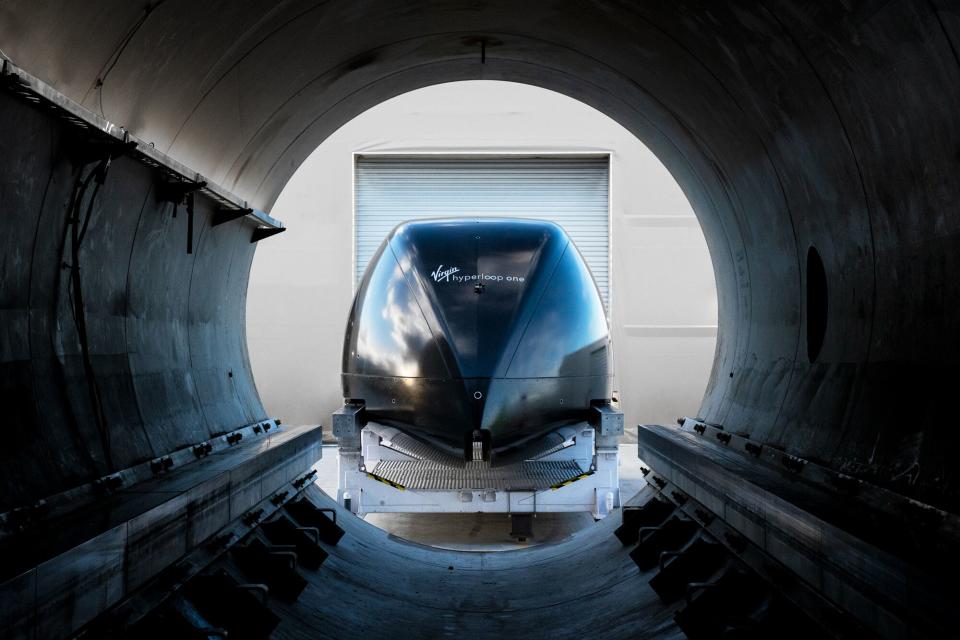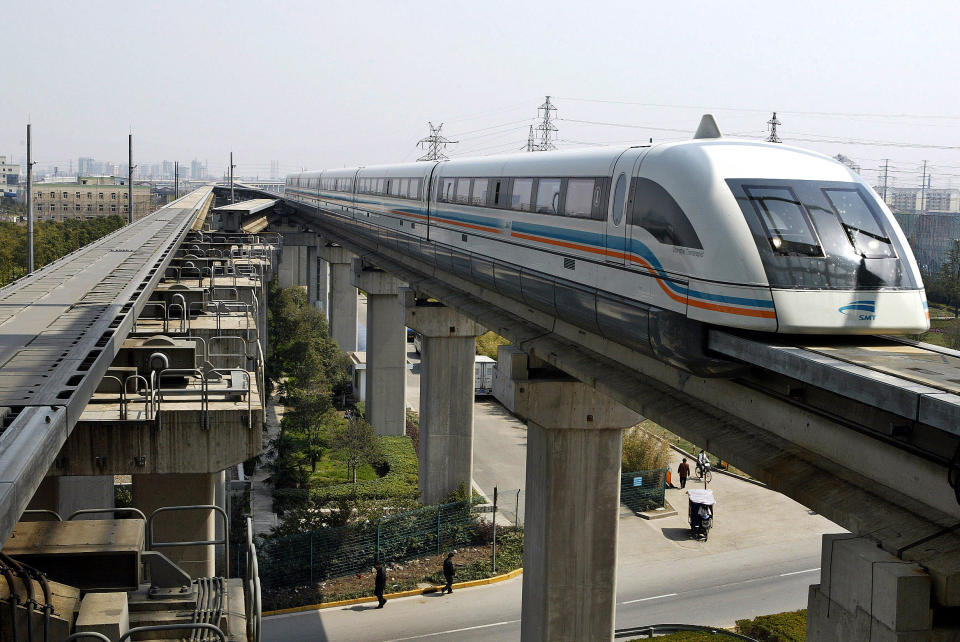Hyperloop CEO reveals where the revolutionary project is right now
The world’s first Hyperloop is likely to be built in India and construction will start at the end of next year, Virgin Hyperloop One CEO Jay Walder told Yahoo Finance.
“One of the big projects that we've been working on right now is in India — it's to build a route from Mumbai to Pune,“ Walder explained in an interview on the sidelines of a national roadshow in New York City. “That's about a [75-mile] route… the first phase of that project will be [7.5 miles]. … I think there’ll be shovels in the ground by the end of 2020. So it's really exciting. It's happening. It's here now.”
The Hyperloop system is a futuristic mode of transportation that would put passengers in pods that would magnetically levitate and travel through vacuum tubes across states, or even countries.
The mode of transportation would move “670 miles an hour,” Walder said. “But it's going to be really smooth. You could literally hold a cup of coffee if you're doing it.”

The Hyperloop race
Interest in the concept was first sparked by a whitepaper published by Tesla and SpaceX Founder Elon Musk in 2013. The promise was simple: to build a safe, fast, cheap, efficient mode of transport that was resistant to weather events or natural disasters.
Aside from Virgin Hyperloop One, Hyperloop Transportation Technologies is also in the race to build the world’s first mass transit Hyperloop.
And Virgin Hyperloop One is clearly ahead. Aside from the first actual track that’s going to be built in India next year, the company has already built a test track in Nevada, near Las Vegas. The pod that was used in that test, XP-1, was on display in New York this week (pictured above).
Hyperloop versus maglev system
While the Hyperloop is at least a year out from being fully operational, other countries have made much more progress in developing similar systems.
In China, the Shanghai Maglev has been fully operational since 2004, shuttling between Pudong Airport to the outskirts of the city. The country has also built the body prototype for a high-speed maglev in May this year, and is expecting it to go into commercial production in 2021. Japan is also developing its own maglev trains, parts of which are ready for commercial operation, and the system is expected to link Tokyo and Nagoya by 2027.

The primary difference between the maglev and the Hyperloop systems is that the latter uses the same maglev concept but requires a special tube to be built for the pods to be transported.
“Our pod literally floats on a bed of air, but unlike maglev systems that are being used around the world in different places in an open environment, like in closing in an enclosed environment, we create a much faster and a much more environmentally friendly system,” Walder said.
“The tube, which is a vacuum, reduces air drag, and makes it much more energy efficient,” he added. “And the tube, depending on the geography, may literally be covered with solar panels, which allows us to be able to work on a carbon-free, carbon-neutral basis …. it's four times more efficient than Amtrak.”
—
Aarthi is a writer for Yahoo Finance. Follow her on Twitter @aarthiswami.
Read more:
Virgin Hyperloop One could build the world’s first hyperloop in India
The 'Cheap Date Index': Here's how much it costs to go out around the world
Read the latest financial and business news from Yahoo Finance
Follow Yahoo Finance on Twitter, Facebook, Instagram, Flipboard, SmartNews, LinkedIn, YouTube, and reddit.

 Yahoo Finance
Yahoo Finance 
